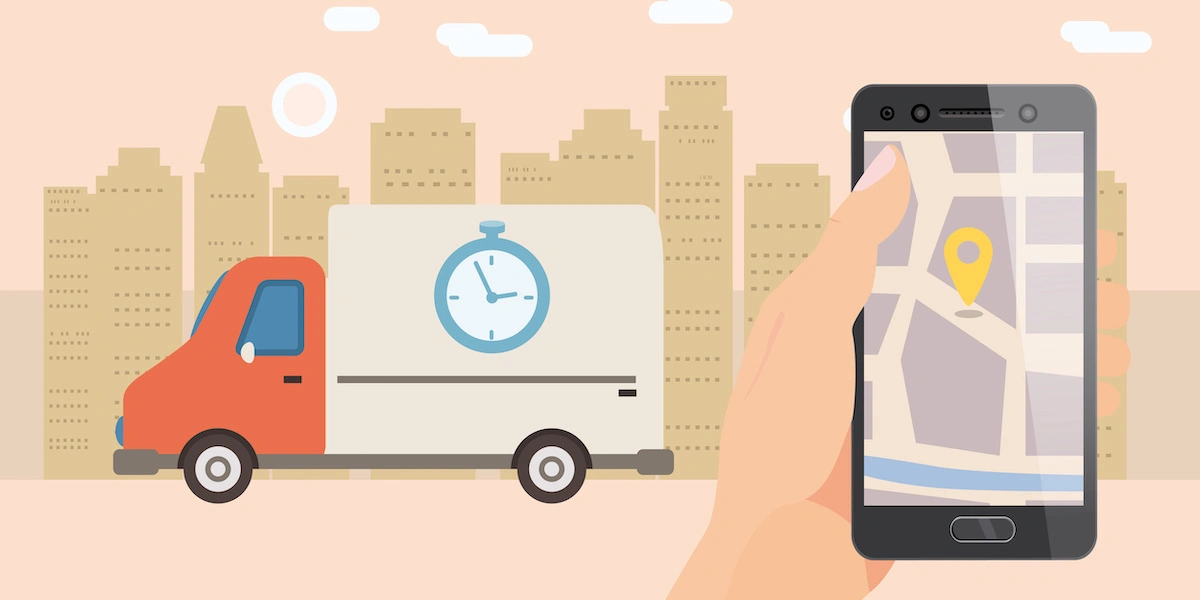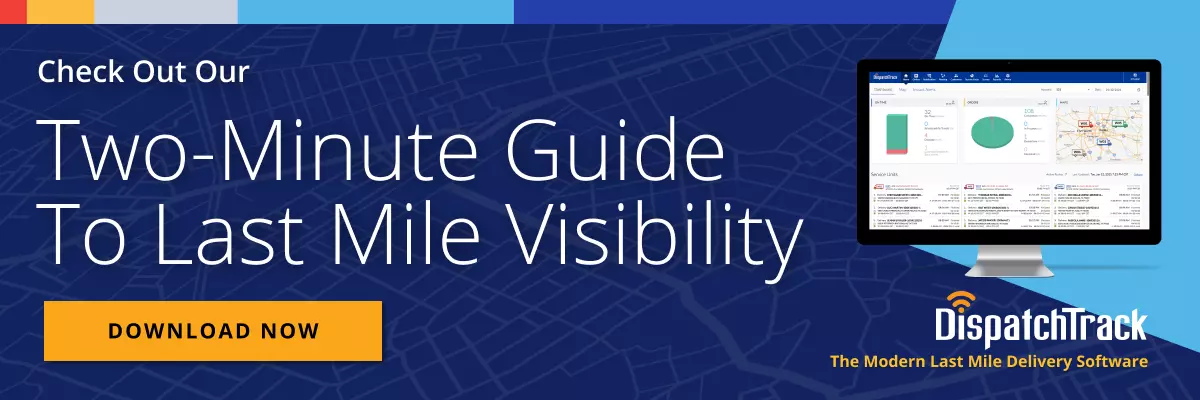Last mile visibility is in some ways a bit of a misnomer: the goal of gathering real time data from throughout your delivery organizations isn’t to be able to see what’s happening, it’s to spot problems and take action. We talk about visibility, but in a sense, what we really mean is intelligence—i.e. something that feeds into a direct loop with smart, results-oriented decision making. 
Making that happen has historically been a huge challenge. In the days before ubiquitous smartphones and multi-tenant SaaS solutions, most businesses were stuck with getting only sporadic updates throughout the day of delivery—updates that were then fairly difficult to act on.
But as technology has evolved, visibility has evolved with it. And when you break last mile visibility down into something that you can achieve through actionable steps, it starts to look less like a buzzword and more like something that can have a day-to-day impact on your profit and loss columns.
1. Centralize Your Data
Visibility is fundamentally about information, i.e. data. Which is why the first step to achieve actionable, strategic visibility is to make sure that all the data you’re going to need in order to make rapid decisions on the day of delivery can be centralized into one interface. This includes order information, customer data, GPS locations for drivers, individual delivery statuses, and even data at the individual item level.
Here, close data integration between a number of different systems is a must. For starters, it helps to be routing, planning, dispatching, tracking, and communicating with customers all within a single logistics software system. Otherwise, you’re constantly switching between screens and fussing with different solutions while your delivery data quickly goes out of date.
By the same token, this is an area where SaaS technology can make a big difference in terms of data accessibility. Not only do cloud solutions tend to integrate with other enterprise systems more easily than on-prem deployments, they’re also built to provide easy access across a wide number of touchpoints. As a bonus, your typical cloud solution provider will be able to guarantee an absolute minimum of downtime.
2. Connect with Drivers and Customers
Data from systems like your ERP or WMS is going to be important to smooth delivery management up and down the process—but some of the most important data on the day of delivery is obviously going to come from out in the field. That’s why equipping your drivers with a robust mobile application is so crucial to real-time visibility in delivery management.
What does a mobile app need to offer in order to power real, strategic visibility? For starters, there are a few things:
- Live status updates: whenever a driver starts going to a stop, begins a job, or finishes a job, they should be able to mark their status in the application so you can see it real time.
- Pictures, signatures, and notes: when it comes to capturing proof of delivery the value of pictures and notes is fairly obvious—but they can also be valuable ways to gain a faster understanding of what’s happening in the field, even for partial or failed deliveries. Whether there’s a problem with a delivered item or the customer simply wasn’t, visual evidence helps you uncover and resolve situations that much more quickly.
- Two-way customer communications: When you can trigger delivery alerts based on what’s happening in the app and you can empower customers to respond directly to those alerts, you can actually capture data from customers, e.g. if they’re going to miss the driver.
- Live chat: When drivers need to get in touch with you, there’s no reason to make them jump through hoops. If they can easily reach out through the app, you can more quickly get exactly the kind of information that tends to go stale almost immediately.
Note that while we glossed over customer communications within the driver app requirements, connecting with customers is something that really needs to happen before, during, and after the delivery in order to ensure accurate, up-to-date information at all times.
3. Upgrade Your UI
Okay, you’ve got all this data that you’ve collected from out in the field and from various other delivery-related systems. How do you prevent that information from becoming overwhelming?
After all, if you got a push notification for each and every driver status update, your phone would never stop going off. That’s why UI is actually one of the overlooked keys to visibility in the last mile. Presenting vast quantities of constantly-updating information in a way that planners can actually grasp and utilize is an art form.
From a practical perspective, the trick with prioritizing visibility via UI is to define what the most essential information is in each situation, and find a way of ensuring that it jumps out. Deliveries with exceptions should stand out from deliveries that are going according to plan, and it should be the work of a second to drill down to details on any delivery that seems like it might require attention.
Beyond that, you’ll also want to configure alerts that are triggered by specific statuses or actions, such that you’re aware of, e.g., any delivery that couldn’t be started, even if you’re not in front of your logistics application.
4. Predict ETAs with AI
Of course, powering alerts for deliveries that are running outside their scheduled ETAs isn’t just a matter of setting up push notifications within your system. Rather, in order to make that possible, you need to be able to identify which trucks are potentially running late far in advance of the actual delivery. Simply put, this requires you to be able to accurately predict when a truck is going to arrive at each stop.
The only reliable answer for ensuring that you can actually estimate arrival times accurately is to leverage predictive AI within your delivery management process. By factoring in historic traffic patterns, driver speed and skill factors, and differences in drive/service time for different products or delivery types, AI can help you predict truck arrival times with pinpoint accuracy, meaning that it’s suddenly easy to see exactly which deliveries are in danger of slipping outside the window that you promised to the customer.
In terms of visibility, you might think of this as a brighter set of headlights, helping you see more of what’s coming at you with greater clarity. The result is that you’re not driving blind when disruptions do arise.
5. Optimize Your Deliveries
So far in this post, we’ve worked under the assumption that when you can see what’s going wrong and what isn’t, you can effectively focus your attention on the deliveries that most require them.
What we haven’t talked about is one important prerequisite for this strategy: that most of your deliveries have to be going right in order to achieve this kind of strategic visibility. We’ve talked about a way to strategically track deliveries in real time so you can find a needle in the haystack—when your deliveries runs are mostly needles, this kind of visibility doesn’t work. Rather than being strategic about how you use your time, you’re overwhelmed with too much information and too many disrupted deliveries to triage.
In short, one of the keys to powering actionable, strategic visibility is to start from a position where most of your deliveries are already going right—otherwise, it’s hard to gain real value from any visibility measures you may be taking. Luckily, many of the steps we laid out above to boost strategic visibility are the same steps that can help you create accurate delivery plans from the start.
